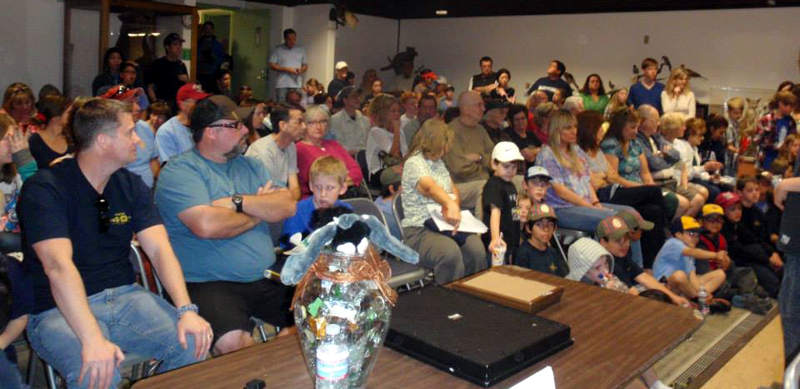 The Placerita Canyon Nature Center Associates and the Community Hiking Club combined their efforts to present an educational program about condors earlier this month.
The Placerita Canyon Nature Center Associates and the Community Hiking Club combined their efforts to present an educational program about condors earlier this month.
Nearly 150 individuals attended the program, including several Boy Scout troops. After the presentation, the Boy Scouts, parents and other interested persons attended a micro-trash clean up on Bear Divide. Nearly 17 full bags of trash, glass and metal bits were recovered and removed from the delicate habitat.
Sixty years ago, the last condors left Santa Clarita. In 2013, a mated pair returned to a cleaner forest with better habitat, looking forward to rearing the first chick in the area in decades.
It is imperative that everyone visiting the Angeles National Forest and the Los Padres Forest be diligent in packing out any trash they bring in, or any they see that others might have left behind.

Participants pick up micro-trash.
The California condor is the largest bird soaring high above western North America. They have been known to soar 150 miles a day in search of food. So it would not be uncommon to see them at the Grand Canyon one week and in Santa Clarita the next. However, most of our local condors merely soar from the Sespe Wilderness to Santa Clarita and back.
An adult condor’s wingspan can be 10 feet across, and they can weigh between 18 and 31 pounds. They can eat three to four pounds of meat in a sitting, and they eat only carrion. While they do not have a good sense of smell, they do have incredible eyesight, and this is how they find their sources of food.

The writer dramatizes the condor’s wingspan for the audience.
A condor can soar 15,000 feet high. Since they almost never flap their wings, they are often mistaken for planes. But they are able to zero in on a carcass at that height – and they are also attracted to the glitter of micro-trash.
Micro-trash, which contains bits of glass and metal objects such as pull tabs and bottle caps, can kill a condor and condor chicks. In addition to micro-trash, lead pellets and bullets, when ingested, can kill them. High tension lines are also dangerous to their survival.
 Condors used to inhabit the entire United States, British Columbia and Baja California. When they were brought into captivity for a specialized breeding program, there were only 22 condors left. Of these, there were just three separate clans.
Condors used to inhabit the entire United States, British Columbia and Baja California. When they were brought into captivity for a specialized breeding program, there were only 22 condors left. Of these, there were just three separate clans.
The biologists in charge of the programs have had fantastic success. There are now 400 condors both in the breeding facilities and flying free in California, Arizona and Baja. Kudos to the biologists who have worked so hard to recover this amazing species from the brink of extinction.
I encourage everyone to visit the Los Angeles Zoo, the San Diego Zoo or Hopper Canyon to view condors in captivity. If you visit the forests, remember: It takes just one little piece of micro-trash to kill or maim one of these critically endangered birds.
Their fight is not yet over. You can help.
Dianne Erskine-Hellrigel is executive director of the Community Hiking Club and president of the Santa Clara River Watershed Conservancy.


Like this:
Like Loading...
Related









 Tweet This
Tweet This Facebook
Facebook Digg This
Digg This Bookmark
Bookmark Stumble
Stumble RSS
RSS











































REAL NAMES ONLY: All posters must use their real individual or business name. This applies equally to Twitter account holders who use a nickname.
0 Comments
You can be the first one to leave a comment.